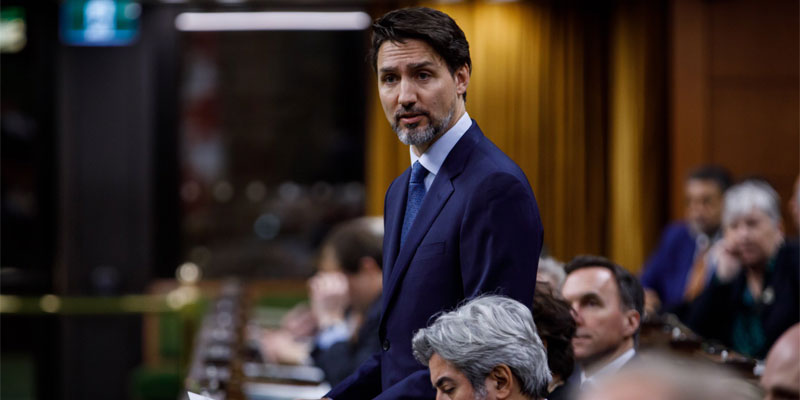New federal government should pursue less-painful climate plan

Liberal Leader Justin Trudeau won enough seats in the recent federal election to form another minority government, which means many of Canada’s existing climate polices will continue. And so, too, will the design flaws in Ottawa’s current climate policies that are imposing unnecessary costs on Canadians and the economy more generally.
But it doesn’t have to be this way. The election could serve as an opportunity for the new federal government to implement a better, less painful climate plan.
In 2015, Canada agreed to reduce greenhouse gas emissions by 30 per cent below 2005 levels by 2030 as part of the Paris Conference. However, in May of this year, Trudeau unilaterally increased our target to a 40 to 45 per cent reduction.
To reach our Paris goal, the Trudeau government increased the carbon tax from a maximum of $50 per tonne in 2022 to $170 per tonne by 2030. Beyond the carbon tax – which is the centerpiece of the plan – the government introduced new spending measures on items such as energy-efficient building retrofits, incentives for zero-emission vehicles, and renewable energy projects, among dozens of other initiatives.
While reducing greenhouse gas emissions to tackle climate change is a priority, the issue is how we actually achieve the goal. We acknowledge that setting a price on carbon is the most efficient (i.e. least costly) way to reduce emissions as it provides the flexibility for individuals and businesses to either pay the price of emitting or find cheaper ways to reduce emissions, rather than mandating one single approach through regulations.
However, several key conditions must be met for carbon pricing to deliver on the promise of cost-effective emissions reduction.
First, a carbon tax should be revenue neutral. Ottawa currently rebates 90 per cent of the revenues in the form of lump-sum payments to households. The remaining 10 per cent is used to finance grants for energy efficiency projects.
More importantly, the way we use carbon tax revenues matters. To mitigate the damage on economic growth, revenues from the carbon tax should be used to reduce other more harmful taxes such as personal and business income taxes—something several Scandinavian countries have done. In this way, economic incentives are improved as a method to improve economic growth. Using the revenues to finance a lump-sum rebate as the Trudeau government is doing does not change the incentives for investment, work, savings or entrepreneurship, and thus does very little to improve economic growth.
Second, a carbon tax should replace existing emissions-related regulations, not to be added to them. The point of a carbon tax is to rely on prices and market decisions to drive a reduction in emissions. The price of the carbon tax allows individuals to make decisions about how best to respond to the cost of emissions, either by innovating, reducing emissions or transitioning to different types of production. Retaining existing regulation prevents some of these decisions, and in other cases, changes the alternatives available. In both cases, the regulations short-circuit the price mechanism intended by the carbon tax. Unfortunately, instead of repealing existing regulations, the Trudeau plan layers the carbon tax on top of existing regulations and mandates.
Third, measures to prevent carbon leakage – where firms reorganize their activities or relocate outside of the country to avoid the carbon tax—must be part of the climate plan. Many economists argue for some type of border adjustments on imports that have GHG-related inputs and for exported goods subject to the carbon tax. The Trudeau government has committed to “exploring the potential of border carbon adjustments” in its climate plan. Nonetheless, it remains uncertain whether the government will proceed.
And finally, economics informs us that the carbon tax rate should be pegged at what economists call the “social cost of carbon,” which is the cost – current and future -- of the damage to society from one additional tonne of carbon emitted today. Recent estimates by the Biden administration peg the social cost of carbon at a range of US$19-$89/tonne by 2030. This suggests that Canada’s carbon tax rate of C$170 per tonne by 2030 is too high—even if the tax were better designed.
Overall, the Trudeau government’s climate plan has design flaws that will unnecessarily hurt our economy. While tackling climate change remains a priority, the renewed Trudeau minority government should design and implement a better, more effective, and less painful climate plan.
Authors:
Subscribe to the Fraser Institute
Get the latest news from the Fraser Institute on the latest research studies, news and events.

